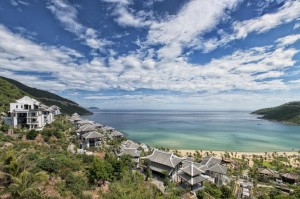Originally known as Cua Han, it gradually developed into a commercial port replacing Hoi An in the early 18th century, when European shipbuilding was improved and large deep-draught vessels could easily enter Danang Bay. The city was associated with the French colonialists who, after establishing their domination of the whole of Vietnam in 1889, separated Danang from Quang Nam Province and renamed the city Tourane under the control of the Governor General of Indochina. After the defeat of the French in 1954, it was given its present name under the authority of the Saigon government.
>> Others topics: Top places to visit in vietnam
Its international fame arose from its role during the American War. In March 1965, American marine units landed and started to set up a major military complex to support the combat bases and operations in and near the De-Militarised Zone, about 220km to the north. American troops and the Saigon government expanded Danang into a political and military centre with an airport, ports, warehouses, roads, and other infrastructure. Industry flourished, and the population grew.
In March 1975, the advancing North Vietnam Army (NVA) captured Hue, and by the end of the month, panic spread through Danang and order collapsed. In early April, with NVA tanks advancing on the city, the chaotic evacuation and airlift began. The human story of the event was documented in the 1997 film ‘Daughter from Danang’ featuring a child and mother separated at that time.
>> Others topics: Top 10 things to do in vietnam
Today, Danang is an important port and Vietnam’s fourth largest city but, despite its substantial business travel potential, there’s a dearth of decent hotels with only the upmarket Furama Resort above a three-star standard.
Nevertheless, its a pleasant place but without a great deal of interest for the traveller apart from its ancient association with the Cham Kingdom, represented by its famous Cham Museum, and a Cao Dai temple second only to the Cao Dai Holy See in importance. However, not counting the DMZ, Hue, My Son and Hoi An, there are places worth visiting not far away.
My Khe Beach
Made famous by the American War, the actual location of the GI’s rest and relaxation area is a small section of My Khe beach, part of the long stretch of sand that runs south alongside the coast for hundreds of kilometres. Nearby, is the Furama, Vietnam’s premier first class resort hotel, the only First Class hotel within reasonable reach of Hue.
My Khe Beach is down the sand from the Furama – it’s easy enough to spot. You can still see the old aircraft hangers at the back of the beach. The American forces used them to house bombers, unwittingly in full view of the Vietcong who maintained a spectacular network of tunnels in the Marble Mountains.
The Marble Mountains
The Marble Mountains are a popular spot for Vietnamese visitors, about ten kilometres from Danang.
Also known by their Vietnamese name of Ngu Hanh Son (Five Mountains Range), they face the East Sea and contain some of the oldest pagodas in Vietnam. The colour of the marble in the five peaks differs: the Thuy Son mountain has pink marble, while the Moc Son mountain’s is white and the Hoa Son mountain’s is brown.
It’s a commercialised site, but the shrines and pagodas built into the caves in the limestone hills are interesting if not too crowded. At its base is Non Nuoc, a stone carving village with more than a thousand people involved in making fine art works and Buddha statues from high-grade limestone, mostly for export worldwide.

